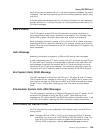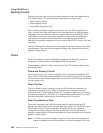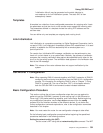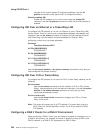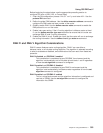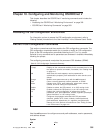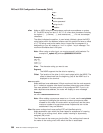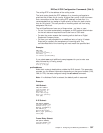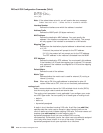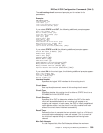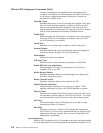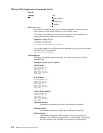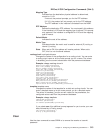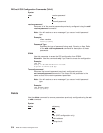The
calling-DTE
is the address of the calling router.
The local router checks the DTE address of an incoming call against a
prioritized list of filters for all circuits. A higher filter
priority
in the list means
that a connection to that filter’s calling DTE address is made first. It is
recommended that you assign a higher priority to filters for static circuits
than for DA circuits. This can prevent an incoming static call from being
assigned a DA circuit.
The
call-UserData
can have one of three values -
osi, dec,
or
user
:
v For
osi
, the router automatically configures an ISO protocol discriminator
for the call data and requires the call to be from an OSI node.
v For
dec
, the router expects the incoming calls to be from a Digital
Equipment Company router.
v For
user
, you are prompted for an additional entry of up to 16 octets.
Enter text to constrain the acceptance of incoming calls. The
call-UserData
field of the incoming call must match the specified text.
Example:
add filter
Filter Name [ ]:
Routing Circuit Name [ ]:
DTE Address [ ]:
Call UserData (OSI/DEC/USER)]:
If you select user, and additional prompt appears for you to enter user
data, followed by a Priority prompt:
(max 16 octets) [ ]?
Priority (1-10) [5]?
prefix-address
Adds static routes to destinations outside the IS-IS domain. This parameter
prompts you for different information depending on the type of subnet (X.25,
LAN, or FRL) that was configured using the set subnet command.
Note: If no Address Prefix is entered, the default prefix is assumed.
Example:
LAN Subnet:
add prefix-address
Interface Number [0]:
Address Prefix [ ]:
MAC Address [ ]:
Default Metric [20]:
Metric Type [Internal]:
State [ON]:
X.25 Subnet:
add prefix-address
Interface Number [0]:
Address Prefix [ ]:
Mapping Type[Manual]:
DTE Address[]:
Default Metric[20]:
Metric Type [Internal]:
State [ON]:
Frame Relay Subnet:
add prefix-address
Interface Number [0]:
Address Prefix [ ]:
DECnet V/OSI Configuration Commands (Talk 6)
Chapter 10. Configuring and Monitoring OSI/DECnet V 307



